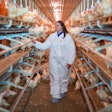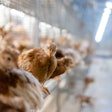Conventional cages for housing laying hens were banned in the EU effective January 1, 2012, but enriched cages were still approved for use. Egg producers in countries like Italy and Spain transitioned from conventional to enriched cages, and retailers and consumers continue to be satisfied with cage-produced eggs. But this hasn’t been the case in the Northern EU countries of Austria, Germany, England and the Netherlands. In these countries, retailers have moved to stocking only shell eggs from cage-free hens.
In the U.S. egg market, several large food companies have made pronouncements about moves to sourcing only egg products from cage-free hens. Richard Kottmeyer, a data analyst who gauges consumer trends and intentions based on Internet activity (see article in this issue), predicts that the U.S. egg products market will go entirely cage-free and that there is a good chance that the shell egg market will follow as well. Kottmeyer thinks the only way to maintain a market for cage-produced eggs at retail in the U.S. is for the industry to secure acceptance of enriched cages as an alternative to cage-free.
Unfortunately, Kottmeyer doesn’t think American consumers will take the time to understand or even consider the scientific facts supporting enriched cages. If Kottmeyer is right, then egg producers will need something besides science to establish enriched cages as an acceptable alternative.
The American Humane Association has developed standards for farm animal care, including for enriched cages, and now claims that almost one-eighth of all farm animals in the U.S. are housed and cared for under one of their audit programs. If U.S. egg producers want to maintain a market for cage-produced eggs, then they are going to need partners who don’t have a self-interest rooted in cost containment to have credibility with consumers. Partnering with an established animal welfare group that accepts the use of animals and animal products for human consumption may be the answer.
















